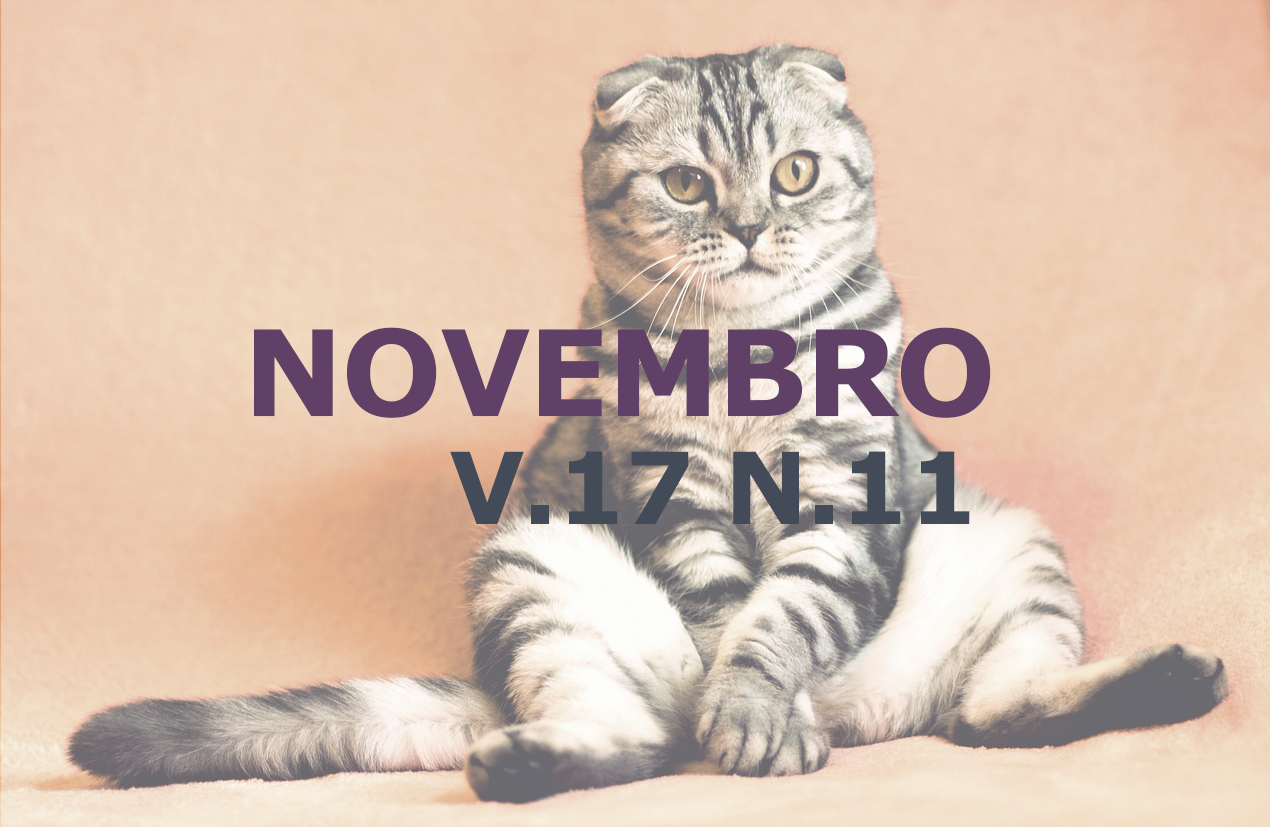Parasitological profile of the coati (Nasua nasua, Linnaeus, 1766) captives of the Arruda Câmara Zoobotanical Park, João Pessoa, Paraíba
DOI:
https://doi.org/10.31533/pubvet.v17n11e1479Keywords:
Nasua nasua, zoo, coati, coproparasitological testAbstract
Parasitic diseases are frequently diagnosed infections in wild animals, among which are gastrointestinal parasites that affect several species. Animals kept in captivity are susceptible to these diseases due to stress, poor sanitary and nutritional management, inadequate facilities and overcrowding of individuals in enclosures. However, endoparasitoses can occur clinically or subclinically, with or without a zoonotic character. The present work traced the parasitological profile of captive Nasua nasua (Linnaeus, 1766) specimens from the Arruda Câmara Zoobotanical Park (PZAC) in João Pessoa, Paraíba (Brazil), through the performance of coproparasitological exams, chosen because they are low-cost, fast and minimally invasive techniques requiring little equipment for their execution, in addition to being effective diagnostic methods. Simple flotation techniques and direct examination were used as qualitative means of the samples, thus enabling the visualization and identification of parasites found in the feces.
References
Alves-Costa, C. P. & Eterovick, P. C. (2007). Seed dispersal services by coatis (Nasua nasua, Procyonidae) and their redundancy with other frugivores in southeastern Brazil. Acta Oecologica, 32(1), 77–92. https://doi.org/10.1016/j.actao.2007.03.001.
Batista, A. I. V., Lucena, G. V. C., Nery, T. F. L., Batista, C. C. N., Batista, J. S., Winkeler, I. E., Rolim, C. M. M., Coelho, W. A. C., Rocha, E. L. B. & Lima, V. F. S. (2021). Gastrointestinal parasites in wild and exotic animals from a Zoobotanical Park in Northeast of Brazil. Research, Society and Development, 10(13), e486101321255. https://doi.org/10.33448/rsd-v10i13.21255.
Beisiegel, B. M. (2001). Notes on the coati, Nasua nasua (Carnivora: Procyonidae) in an Atlantic forest area. Brazilian Journal of Biology, 61, 689–692. https://doi.org/10.1590/s1519-69842001000400020.
Beisiegel, B. M. & Campos, C. B. (2013). Avaliação do risco de extinção do quati Nasua nasua (Linnaeus, 1766) no Brasil. Biodiversidade Brasileira, 3(1), 269–276. https://doi.org/10.47749/t/unicamp.2019.1090882.
Cubas, Z. S., Silva, J. C. R. & Catão-Dias, J. L. (2007). Tratado de animais selvagens: Medicina Veterinária. Roca Ltda.
Emmons, L. & Helgen, K. (2016). South American Coati. The IUCN red list of threatened species. https://doi.org/10.2305/iucn.uk.2016-1.rlts.t41684a45216227.
Ferreira, M. U. (2012). Parasitologia contemporânea. (p. 223).
Figueiredo, M. A. P., Santos, A. C. G. & Guerra, R. M. S. N. C. (2010). Ectoparasitos de animais silvestres no Maranhão. Pesquisa Veterinária Brasileira, 30, 988–990. https://doi.org/10.1590/s0100-736x2010001100013.
Geraghty, V., Mooney, J. & Pike, K. (1981). A study of parasitic infections in mammals and birds at the Dublin Zoological Gardens. Veterinary Research Communications, 5(1), 343–348. https://doi.org/10.1007/bf02215003.
Gompper, M. E. & Decker, D. M. (1998). Nasua nasua. Mammalian Species, 580, 1–9. https://doi.org/10.2307/3504444.
Gray, J. E. (1825). Outline of an attempt at the disposition of the Mammalia into tribes and families with a list of the genera apparently appertaining to tribe. Annals of Philosophy, 10, 337–344.
Hemetrio, N. S. (2007). Levantamento populacional de quatis (Procyonidae: Nasua nasua) no Parque das Mangabeiras, Belo Horizonte, MG. Universidade Federal de Minas Gerais.
Hoffmann, R. P. (1987). Diagnóstico de parasitismo veterinário. Sulina.
Lunardon, T. (2016). Correlação entre eosinofilia e parasitas gastrintestinais em cães. Revista Eletrônica Biociências Biotecnologia e Saúde, 15.
Marques, A. A. B., Fontana, C. S., Vélez, E., Bencke, G. A., Schneider, M. & Reis, R. E. (2002). Lista das espécies da fauna ameaçadas de extinção no Rio Grande do Sul. EDIPUCRS. https://doi.org/10.32467/issn.2175-3628v23n1a14.
Moraes, M. F. D., Silva, M. X., Tebaldi, J. H. & Hoppe, E. G. L. (2019). Parasitological assessment of wild ring-tailed coatis (Nasua nasua) from the Brazilian Atlantic rainforest. International Journal for Parasitology: Parasites and Wildlife, 9, 154–158. https://doi.org/10.1016/j.ijppaw.2019.04.012.
Ovington, K. S. & Behm, C. A. (1997). The enigmatic eosinophil: investigation of the biological role of eosinophils in parasitic helmint infection. Memorias Do Instituto Oswaldo Cruz, 92(Sup. 2), 93–104. https://doi.org/10.1590/S0074-02761997000800013.
Panayotova-Pencheva, M. S. (2013). Parasites in captive animals: a review of studies in some European zoos. Der Zoologische Garten, 82(1–2), 60–71. https://doi.org/10.1016/j.zoolgart.2013.04.005.
Santos, I. G., Batista, A. I. V., Silva, W. S. I., Oliveira Neto, M. B., Schettino, S. C., Oliveira, M. R., Ramos, R. A. N., Alves, L. C., Bezerra-Santos, M. & Lima, V. F. S. (2022). Gastrointestinal parasites in captive wild animals from two Brazilian Zoological Gardens. Research, Society and Development, 11(4), e28411426637. https://doi.org/10.33448/rsd-v11i4.26637.
Santos, V. A. & Beisiegel, B. M. (2006). A dieta de Nasua nasua (Linnaeus, 1766) no Parque Ecológico do Tietê, SP. Revista Brasileira de Zoociências, 8(2), 199–203. https://doi.org/10.1590/s0100-736x2015000900004.
Táparo, C. V, Perri, S. H. V, Serrano, A. C. M., Ishizaki, M. N., Costa, T. P., Amarante, A. F. T. & Bresciani, K. D. S. (2006). Comparação entre técnicas coproparasitológicas no diagnóstico de ovos de helmintos e oocistos de protozoários em cães. Revista Brasileira de Parasitologia Veterinária, 15(1), 1–5.
Tscherner, K. & Masendorf, F. (1974). Analyse von schülerbeurteilungen und zeugnisnoten bei einzelnen lehrern. Psychologie in Erziehung Und Unterricht, 21(3), 135–149.Viana, F. A. B. (2014). Guia terapêutico veterinário. Editora Guanabara Koogan.
Downloads
Published
Issue
Section
License
Copyright (c) 2023 Marcos Wanderson Vieira Monteiro, Myllena Mycheli Bevenuto Nunes, Paola de Cássia Gonçalves, Thiago Ferreira Lopes Nery, Julia Helena Franca Diniz, Luciana Batista Guerra, Sthefany Kristinne Alves de Melo, Artur da Nóbrega Carreiro, Sandra Batista dos Santos, Nadja Soares Vila-Nova

This work is licensed under a Creative Commons Attribution 4.0 International License.
Você tem o direito de:
Compartilhar — copiar e redistribuir o material em qualquer suporte ou formato
Adaptar — remixar, transformar, e criar a partir do material para qualquer fim, mesmo que comercial.
O licenciante não pode revogar estes direitos desde que você respeite os termos da licença. De acordo com os termos seguintes:
Atribuição
— Você deve dar o crédito apropriado, prover um link para a licença e indicar se mudanças foram feitas. Você deve fazê-lo em qualquer circunstância razoável, mas de nenhuma maneira que sugira que o licenciante apoia você ou o seu uso. Sem restrições adicionais
— Você não pode aplicar termos jurídicos ou medidas de caráter tecnológico que restrinjam legalmente outros de fazerem algo que a licença permita.





